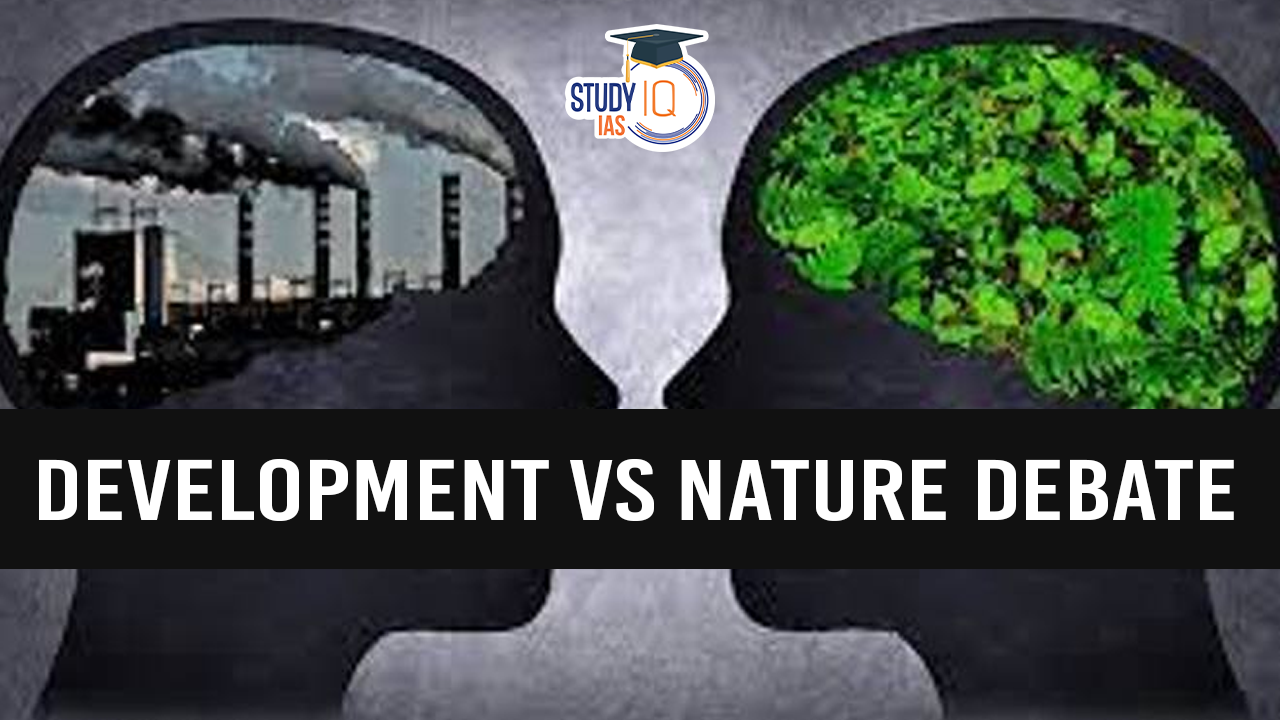Table of Contents
Context: Over 2,500 citizens gathered in Baner, Pune, for a ‘Chipko’ agitation, protesting against Riverfront Development (RFD) project.
What are the Key Issues?
- Ecological damage.
- Concerns over tree cutting (11,000 trees to be felled).
- Fears that concretization of riverbanks may increase flood risks instead of preventing them.
Why Infrastructure Development is Essential?
- Economic Growth: Infrastructure boosts productivity, facilitates trade, and attracts investment, driving overall economic development.
- Job Creation: Large-scale projects in transportation, energy, and urban development generate employment across various skill levels.
- Improved Connectivity: Roads, railways, and digital infrastructure enhance accessibility, reducing travel time and fostering regional integration.
- Better Quality of Life: Infrastructure in healthcare, education, and housing improves living standards and social well-being.
- Industrial and Technological Advancement: Modern infrastructure supports industries, promotes innovation, and enhances global competitiveness.
- Resilience and Disaster Management: Robust infrastructure mitigates risks from natural disasters, ensuring safety and quick recovery.
How Development Impacts the Environment
Deforestation and Habitat Loss
- Expansion of cities, industries, and agriculture leads to large-scale deforestation.
- Mature trees provide critical ecosystem services (carbon sequestration, habitat for birds and small mammals, microclimate regulation) that cannot be easily replaced.
- Example: Aarey Forest (Mumbai) clearance for Metro project led to protests.
Air and Water Pollution
Industrialization and urbanization increase air pollution (CO₂, PM2.5, NOx emissions).
- Water bodies get contaminated due to untreated sewage and industrial effluents.
- Example: Ganga and Yamuna rivers face severe pollution despite cleaning efforts.
Climate Change and Global Warming
Fossil fuel consumption in industries, transport, and power plants raises greenhouse gas emissions.
- Leads to rising temperatures, erratic rainfall, and extreme weather events.
- Example: Heatwaves in India (2023) linked to climate change due to urban expansion.
Soil Degradation and Desertification
Overuse of chemical fertilizers, mining, and deforestation deplete soil fertility.
- Urban expansion and infrastructure projects reduce arable land.
- Example: Thar Desert is expanding due to overgrazing and deforestation in Rajasthan.
Water Scarcity and Groundwater Depletion
Excessive water extraction for irrigation, industries, and urban areas lowers groundwater levels.
- Dams and river diversions disrupt natural water flow and aquatic ecosystems.
- Example: Bangalore and Chennai face water crises due to over-extraction of groundwater.
Loss of Indigenous Livelihoods
Infrastructure projects like dams, highways, and mining displace tribal and rural communities.
- Traditional occupations like farming and fishing are impacted.
- Example: Hasdeo Aranya (Chhattisgarh) coal mining project threatens tribal land and forests.
Replacement Challenges
- The practice of “planting 10 times more trees” as a mitigation is misleading since replanted trees often cannot match the ecological value of mature trees.
- There is a lack of scientific rigor in counting and ensuring the quality of replacement tree cover.
Loopholes in Governance
- Laws like the Environment Protection Act (1986), Forest Conservation Act (1980), and EIA (Environmental Impact Assessment)
- However, the dilution of environmental regulations to favour industries often leads to conflicts.
| Key Movements Against Deforestation |
|
Laws in India Related to Conservation of Forests and Environment
- The Indian Forest Act, 1927: Regulates the management of forests, categorizes forests into Reserved, Protected, and Village Forests, and provides guidelines for forest conservation and commercial usage.
- The Wildlife Protection Act, 1972: Establishes protected areas like national parks and wildlife sanctuaries and prohibits hunting, poaching, and illegal trade of wildlife.
- The Water (Prevention and Control of Pollution) Act, 1974: Regulates water pollution and establishes pollution control boards at central and state levels to monitor water quality.
- The Forest Conservation Act, 1980: Restricts deforestation and conversion of forest land for non-forest purposes without government approval.
- The Environment Protection Act, 1986: Grants the central government power to take measures for environmental protection, including setting pollution standards and conducting environmental impact assessments (EIA).
- The Biological Diversity Act, 2002: Aims to conserve biodiversity, regulate access to biological resources, and ensure equitable benefit-sharing from their use.
- The Scheduled Tribes and Other Traditional Forest Dwellers (Recognition of Forest Rights) Act, 2006: Recognizes the rights of forest-dependent communities and ensures their participation in forest conservation.
- The Compensatory Afforestation Fund Act, 2016: Mandates compensatory afforestation and ecosystem restoration in case of forest land diversion for development projects.
- The Air (Prevention and Control of Pollution) Act, 1981: Regulates air pollution, empowers pollution control boards, and restricts industrial emissions.
- The National Green Tribunal Act, 2010: Establishes the National Green Tribunal (NGT) to handle environmental disputes and ensure speedy resolution of cases related to environmental protection.
Committee Recommendations on Balancing Environment and Development
- Brundtland Commission (1987): Highlighted the interconnection between environmental sustainability and economic activities, leading to discussions on environmental accounting, sustainable development, and the 1992 Earth Summit in Rio de Janeiro.
- Mishra Committee (1976): Reported that Joshimath in Uttarakhand is built on loose sand and stone deposits rather than solid rock, recommending a ban on new construction in the area to prevent land subsidence.
- Kasturirangan Committee (2012): Proposed conservation of the Western Ghats biodiversity while ensuring sustainable and inclusive development, recommending that 37% of the region be designated as Ecologically Sensitive Areas (ESA).
- S.R. Subramanian Committee (2014): Suggested amendments to environmental laws to streamline regulatory processes, improve transparency, and strengthen enforcement mechanisms for effective environmental governance.
- Justice K.S. Radhakrishnan Committee (2018): Focused on solid waste management in India, emphasizing improved waste disposal strategies, recycling promotion, and pollution reduction to encourage sustainable living.
Proposed Solutions
- Minimize Tree Cutting: Trees should only be felled as a last resort, after a careful, individual assessment.
- Developments should first explore options to realign or modify plans to retain existing trees.
- Tree Translocation & Preservation: Where possible, suitable trees should be translocated rather than removed.
- Use technology to map and catalogue trees (including size, species, and health) so that development plans can be adapted accordingly.
- Integrated Urban Planning: Create an integrated approach that involves urban planners, environmental experts, and development authorities from the outset to design projects that balance both development and green preservation.
- Sustainable Development Models: Concepts like circular economy, green infrastructure, and low-carbon development can bridge the gap.
- Stronger Governance and Coordination: Establish better coordination among various agencies and form a dedicated tree authority to enforce tree protection laws effectively.


 List of National Parks in India 2025, Ch...
List of National Parks in India 2025, Ch...
 Bonnet Macaques: Habitat, Features, Beha...
Bonnet Macaques: Habitat, Features, Beha...
 Periyar Tiger Reserve, Map, Flora, Fauna...
Periyar Tiger Reserve, Map, Flora, Fauna...

























